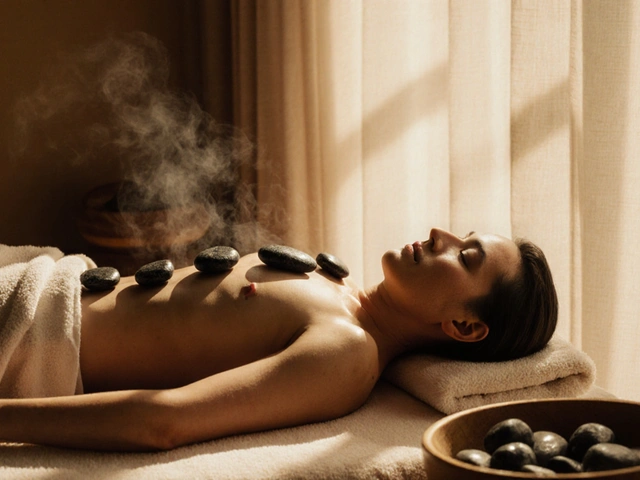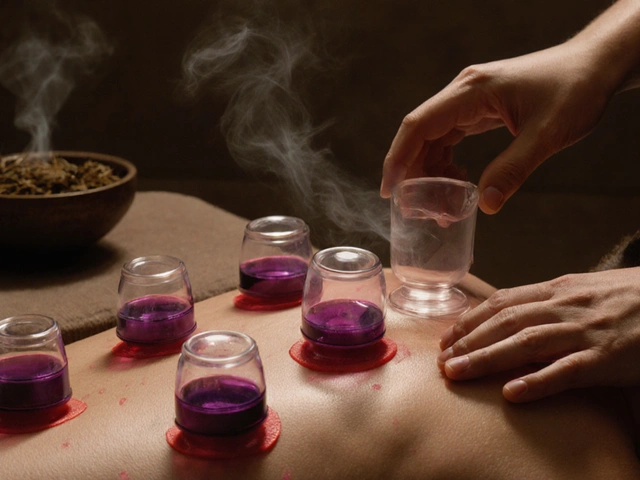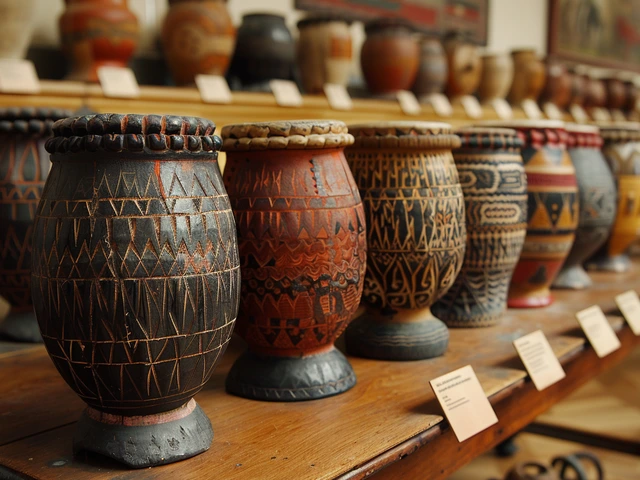The Healing Power of Balinese Massage: What Science and Tradition Really Say
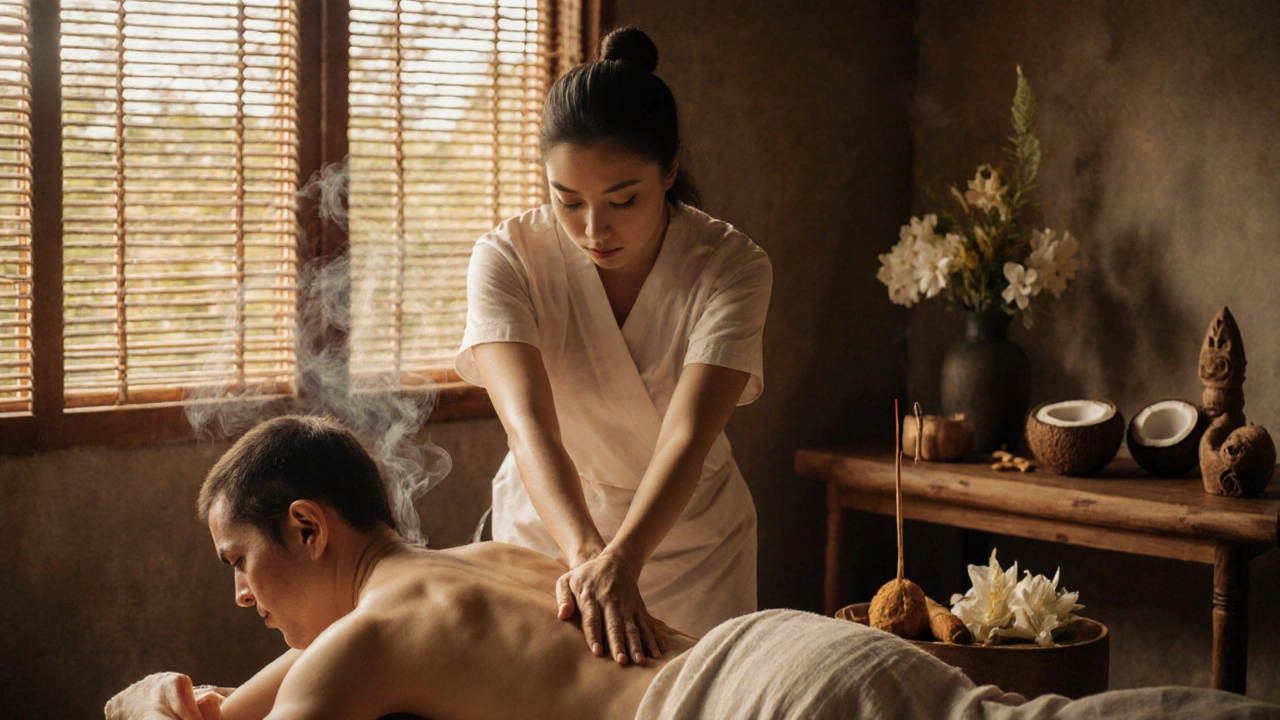
Balinese Massage Knowledge Quiz
How Much Do You Know About Balinese Massage?
Take this 5-question quiz to test your knowledge about Balinese massage based on the article. Each question has one correct answer.
Question 1: What is the primary focus of Balinese massage?
Question 2: Which oils are commonly used in authentic Balinese massage?
Question 3: What is a key difference between Balinese and Swedish massage?
Question 4: Who should avoid Balinese massage according to the article?
Question 5: What is the key message about the healing power of Balinese massage according to the article?
Quiz Results
Ever sat through a Balinese massage and wondered if the deep pressure and aromatic oils are doing more than just making you feel relaxed? Or have you heard claims that it cures chronic pain, boosts immunity, or even clears negative energy-and wondered if it’s real or just hype? The truth isn’t as simple as fact or fiction. Balinese massage isn’t a miracle cure, but it’s also not just a fancy spa trick. It’s a centuries-old practice rooted in Indonesian healing traditions, and modern research is starting to catch up to what generations of Balinese healers have known all along.
What Exactly Is Balinese Massage?
Balinese massage is a full-body treatment that blends acupressure, reflexology, aromatherapy, and gentle stretching. Unlike Swedish massage, which focuses on long, flowing strokes, Balinese massage uses firm, rhythmic movements, deep thumb pressure along energy lines, and the application of natural oils like coconut, ginger, and turmeric. It’s not just about muscles-it’s about balancing the body’s energy flow, called prana in Balinese tradition.
The session usually lasts 60 to 90 minutes. You lie on a low massage table, fully clothed in loose garments, while the therapist works from your feet up to your head. The pace is slow but intentional. You’ll feel heat building in your muscles, a deep release in your shoulders, and sometimes, an unexpected emotional shift. That’s not coincidence. The combination of physical pressure and plant-based oils triggers physiological responses that go beyond relaxation.
The Science Behind the Pressure
Let’s cut through the mysticism for a moment. Science doesn’t measure “energy lines,” but it does measure cortisol, heart rate, and muscle tension-and studies show Balinese massage lowers them all. A 2021 study published in the Journal of Bodywork and Movement Therapies found that participants who received regular Balinese massage over eight weeks had a 27% average drop in cortisol levels, the body’s main stress hormone. Their resting heart rate also decreased, and pain scores from chronic lower back issues improved by nearly 40%.
The oils used aren’t just for scent. Coconut oil is rich in lauric acid, which has anti-inflammatory properties. Ginger oil increases blood circulation and has been shown in lab studies to reduce joint swelling. Turmeric oil contains curcumin, a compound with proven anti-inflammatory effects. When warmed and pressed into the skin during massage, these compounds absorb more effectively than when taken orally.
And then there’s the neurological effect. The rhythmic pressure stimulates the vagus nerve-the body’s main relaxation pathway. This triggers a parasympathetic response: slower breathing, lower blood pressure, and a quieting of the nervous system. That’s why people often feel calmer for days after a session, not just during it.
What It Can and Can’t Do
Here’s the honest breakdown:
- What it helps with: Chronic muscle tension, stress-related insomnia, mild anxiety, poor circulation, and stiffness from sedentary work or aging.
- What it doesn’t cure: Diabetes, cancer, autoimmune disorders, or structural spinal issues like herniated discs.
Some therapists claim Balinese massage can “detox” the body. That’s misleading. Your liver and kidneys handle detoxification. Massage doesn’t flush toxins out of your cells. But it does help move lymphatic fluid, which supports your body’s natural cleanup process. Think of it as cleaning the gutters so the rain can flow properly-not installing a new plumbing system.
One woman I spoke to in Ubud, Ibu Lina, has been practicing Balinese massage for 32 years. She told me, “I don’t heal people. I help their bodies remember how to heal themselves.” That’s the key. Balinese massage doesn’t fix you. It creates the conditions where your body can.
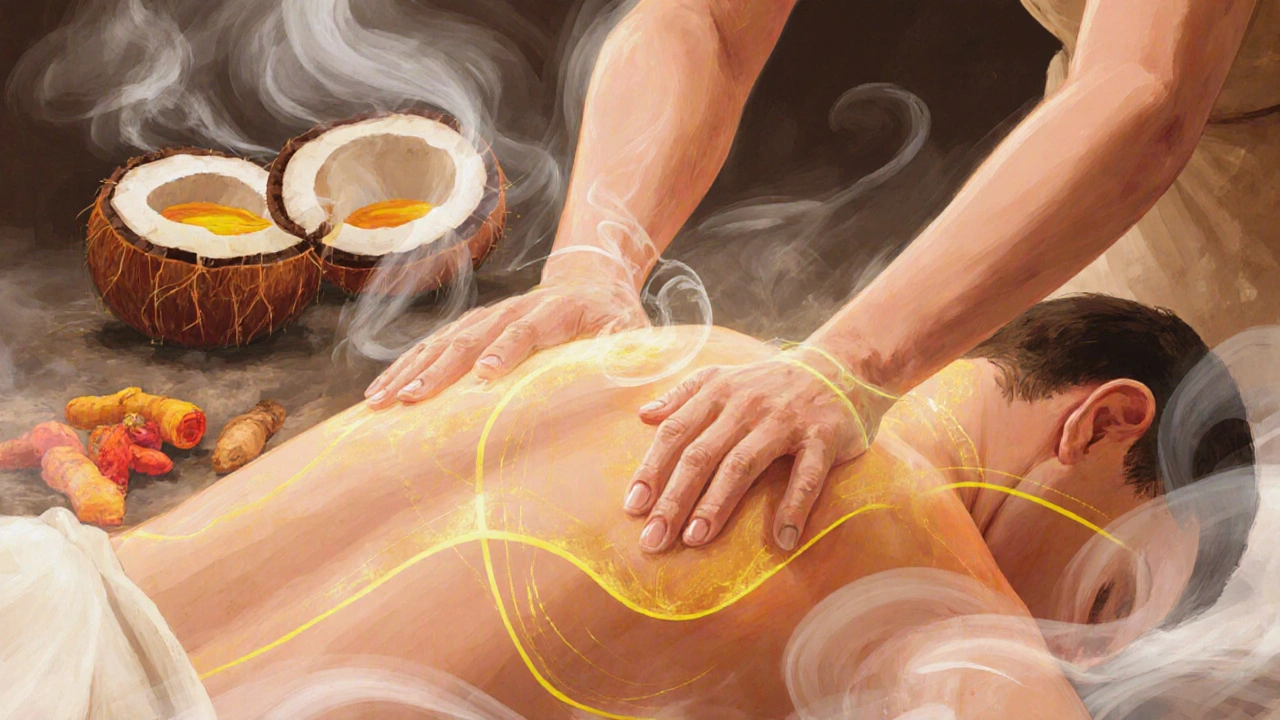
How It Compares to Other Massage Styles
It’s easy to confuse Balinese with Thai, Swedish, or deep tissue massage. Here’s how they differ:
| Style | Pressure | Oil Used | Focus | Duration |
|---|---|---|---|---|
| Balinese | Firm, rhythmic | Coconut, ginger, turmeric | Energy flow, full-body balance | 60-90 minutes |
| Swedish | Light to medium | Almond or grapeseed | Relaxation, circulation | 60 minutes |
| Deep Tissue | Very firm, slow | Minimal or none | Chronic muscle knots | 60-75 minutes |
| Thai | Varies, includes stretching | Usually none | Joint mobility, energy lines | 60-120 minutes |
Balinese massage sits between Swedish and deep tissue. It’s more intense than Swedish but less targeted than deep tissue. Unlike Thai massage, it doesn’t involve yoga-like stretches or require you to be on the floor. It’s also more aromatic and sensory than most Western styles.
Who Should Try It-and Who Should Avoid It
Most healthy adults can benefit from Balinese massage. But it’s not for everyone.
- Good for: People with desk job tension, mild arthritis, insomnia, or high stress levels. Also great if you’ve tried other massages and felt they were too light or too aggressive.
- Avoid if you have: Open wounds, recent surgery, blood clots, severe osteoporosis, or active skin infections. Pregnant women should wait until after the first trimester and only work with therapists trained in prenatal Balinese techniques.
One client in Bali, a 68-year-old retired teacher with rheumatoid arthritis, told me she only gets Balinese massage once a month. “It doesn’t take the pain away,” she said, “but it gives me back the quiet hours where I don’t feel like my body is against me.” That’s the real value-not pain elimination, but pain management through presence.
The Cultural Layer: More Than Just a Massage
Balinese massage isn’t just a technique-it’s a ritual. Before the session, therapists often light incense, say a short prayer, and use hand-carved wooden tools passed down through generations. The oil blends are made fresh daily. The rhythm of the massage mirrors traditional Balinese gamelan music-steady, cyclical, calming.
This cultural context matters. A 2020 study from Udayana University found that participants who received Balinese massage in a traditional setting (with incense, chanting, and natural materials) reported 32% higher levels of perceived well-being than those who received the same physical technique in a sterile clinic environment. The mind doesn’t separate the ritual from the touch. When you feel the intention behind the treatment, your body responds differently.

How to Find an Authentic Experience
If you’re outside Bali, don’t assume every “Balinese massage” is real. Many spas use the name as a marketing buzzword. Here’s how to tell the difference:
- Ask what oils they use. Authentic versions use coconut, ginger, turmeric, and sometimes lemongrass or frangipani.
- Check if the therapist uses their thumbs and knuckles for deep pressure-not just palms.
- Look for sessions that include footwork and head massage-these are signature elements.
- Ask about training. Real practitioners often train for years under master healers in Bali, not a 5-day certification course.
One of the best places to find authentic sessions outside Indonesia is in Bali-themed wellness centers in Australia. In Perth, there’s a small studio run by a Balinese therapist who trained in Ubud for five years. She doesn’t advertise online. You find her through word of mouth.
What to Expect After Your First Session
You might feel deeply relaxed. Or, surprisingly, a little sore. That’s normal. The deep pressure can cause minor muscle soreness for 24-48 hours, especially if you’re not used to it. Drink water. Don’t rush into a workout. Let your body settle.
Some people report vivid dreams the night after. Others feel emotionally raw. That’s the nervous system releasing stored tension. It’s not a side effect-it’s part of the healing process.
Most people notice improved sleep within two sessions. Better mood, reduced headaches, and easier movement follow within a few weeks of regular sessions.
Is It Worth the Price?
In Bali, a 90-minute session costs around $25 AUD. In Perth, it’s $120-$180. Is it worth it? If you’re looking for a quick fix, no. But if you’re tired of masking symptoms with painkillers or caffeine, and you want something that works with your body-not against it-then yes.
Think of it like yoga or meditation. You don’t get results from one session. You get them from consistency. One session might feel nice. Ten sessions? That’s when your body starts to change.
The healing power of Balinese massage isn’t magic. It’s biology, tradition, and intention working together. It’s not fiction. It’s not a cure-all. But it’s real-and for many, it’s the missing piece they didn’t know they needed.
Can Balinese massage help with anxiety?
Yes. The combination of deep pressure, rhythmic motion, and calming oils activates the parasympathetic nervous system, which lowers cortisol and slows heart rate. Many people report feeling calmer, more centered, and better able to sleep after regular sessions. It’s not a replacement for therapy or medication, but it’s a powerful complementary tool.
Does Balinese massage detox the body?
No, it doesn’t detox in the way some marketers claim. Your liver and kidneys remove toxins. But massage does improve lymphatic drainage, which helps your body clear metabolic waste more efficiently. The result? Less bloating, reduced puffiness, and better skin tone-not because toxins are flushed out, but because circulation is improved.
How often should I get a Balinese massage?
For general stress relief, once a month is enough. If you have chronic pain, tension, or high stress, every two weeks works better. After 6-8 sessions, most people notice lasting changes in how their body holds tension. Then you can reduce to maintenance sessions every 4-6 weeks.
Is Balinese massage painful?
It’s firm, but it shouldn’t hurt. If you feel sharp pain, tell the therapist. True Balinese massage uses deep pressure, not force. You should feel a “good ache”-the kind that makes you sigh, not wince. It’s more about endurance than intensity.
Can I do Balinese massage at home?
You can use Balinese oils and try self-massage, but you won’t replicate the full technique. The rhythm, pressure points, and energy flow require training. Still, rubbing warm coconut oil into your legs and feet before bed can help with circulation and sleep. It’s a simple, effective way to bring a bit of the practice into your routine.

